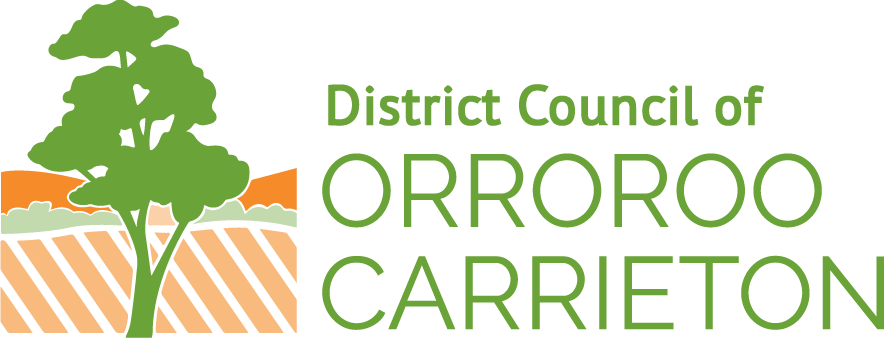Community Resilience
‘A Sunny South Australian Town, which is rapidly progressing’
J. Edward Robertson, 1909
The Township of Orroroo was surveyed in 1874 by G. W. Goyder. The name Orroroo was proposed by the first permanent European settler, Charlie Easther, after a small creek close by named Oorrooroo by the Traditional Owners. The true meaning of ‘Orroroo’ has never been confirmed, ranging from ‘name of a creek with a rapid current’, ‘wind in the trees’, ‘the name of a young native girl who lived on Pekina Station who was a swift runner’ and ‘the rendezvous of the magpie’.
A Store and Post Office were erected on the corner of Second and Fourth Streets, and shortly after, the Orroroo Hotel was built on the opposite corner. ‘Solly’s Hutt’, the first dwelling house built in Orroroo was constructed of mud and pine, and with the growth and increasing commercial importance of the town, other business premises and houses were erected – notably Messrs. Levine & Judell’s General Store, Bugg’s Blacksmith Shop and Tremain Bros. Butchers and Bakers.
The first land sales of the township were conducted in Adelaide on 11 May 1876, with allotments sold in acre and one and a half acre blocks. Settlers blocks of around 640 acres were also opened up for purchase by credit.
Hopeful early settlers came to the area to make a living - Orroroo was a service town for farmers, sheep graziers, townspeople and their families. Bringing their worldly possessions, and sometimes a small mob of cattle and sheep, they arrived by foot, horse-back, coach and other horse and bullock-drawn vehicles.
The Christian faith was an important part of life for the pioneer settlers, with the various sects – Anglican, Roman Catholic, Methodist and Baptist Churches – all being well represented and attended by large congregations.
By the late 1870s Orroroo was expanding rapidly to catering to the influx of new settlers. The Government School was opened in 1880, with initial enrolment of thirty students, by 1900 there were 200 pupils. By then, there were three hotels, post office, institute, police station, bank, flour mill, bakers, blacksmiths, wheelwrights, butchers, shoemakers, carpenters, masons and several stores. The buildings were constructed of stone sourced from local properties and the Pekina Creek. Many of these buildings are still standing today, including Parnell’s former factory (Blacksmith’s Chatter), which turned out hundreds of vehicles (wagons and trollies) over the years.
Completion of the Petersburg (Peterborough) to Orroroo section of the narrow gauge Terowie – Pichi Richi Railway in 1881 permanently connected the town to the outside world. After the arrival of the railway, ‘late-comers’ and their belongings, including farming plant and equipment, came by train.
Although recognised as the medical hub within 2000 square miles, Orroroo was without a hospital until 1920, when the Vigilance Society pushed for the establishment of the Orroroo and Districts Hospital.
Sport is fundamental to the community. The Orroroo Jockey Club was one of the original clubs in the north, holding its first meeting in 1878 with a reported attendance of 1600 people. Australian Rules Football has been played in Orroroo since 1885 and the ‘Roos are one of the last standalone football clubs in the association. Many other clubs, including tennis, cricket, golf, bowls, rifle shooting and athletics have formed over the years.
Today the District Council of Orroroo Carrieton is the smallest Local Government in South Australia, with a population of under 1000.
Local businesses are integral to the local economy and the fabric of the community; due to advancements in technology, vehicles and transport, they are now primarily goods and services for convenience or tourism enterprises.
Despite the challenges of drought, geographical isolation, an aging population and drift to the city, the district remains united, resilient in the face of adversity.
